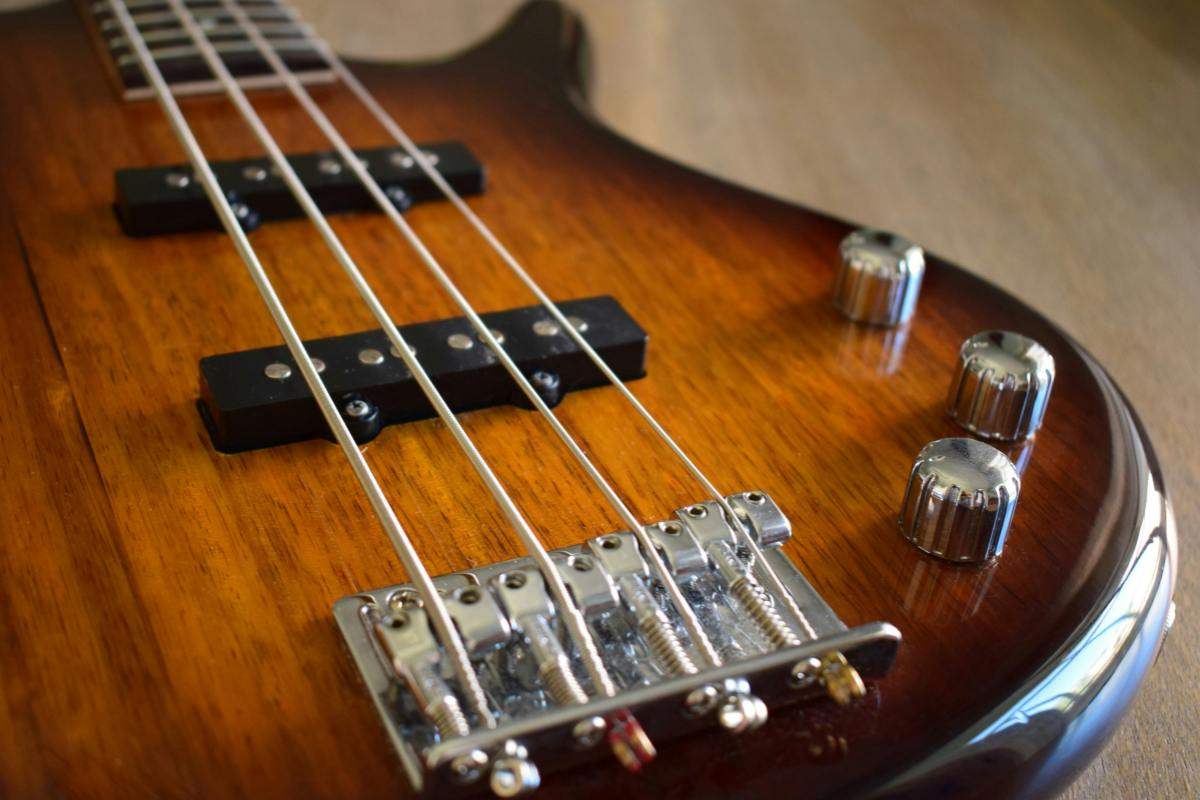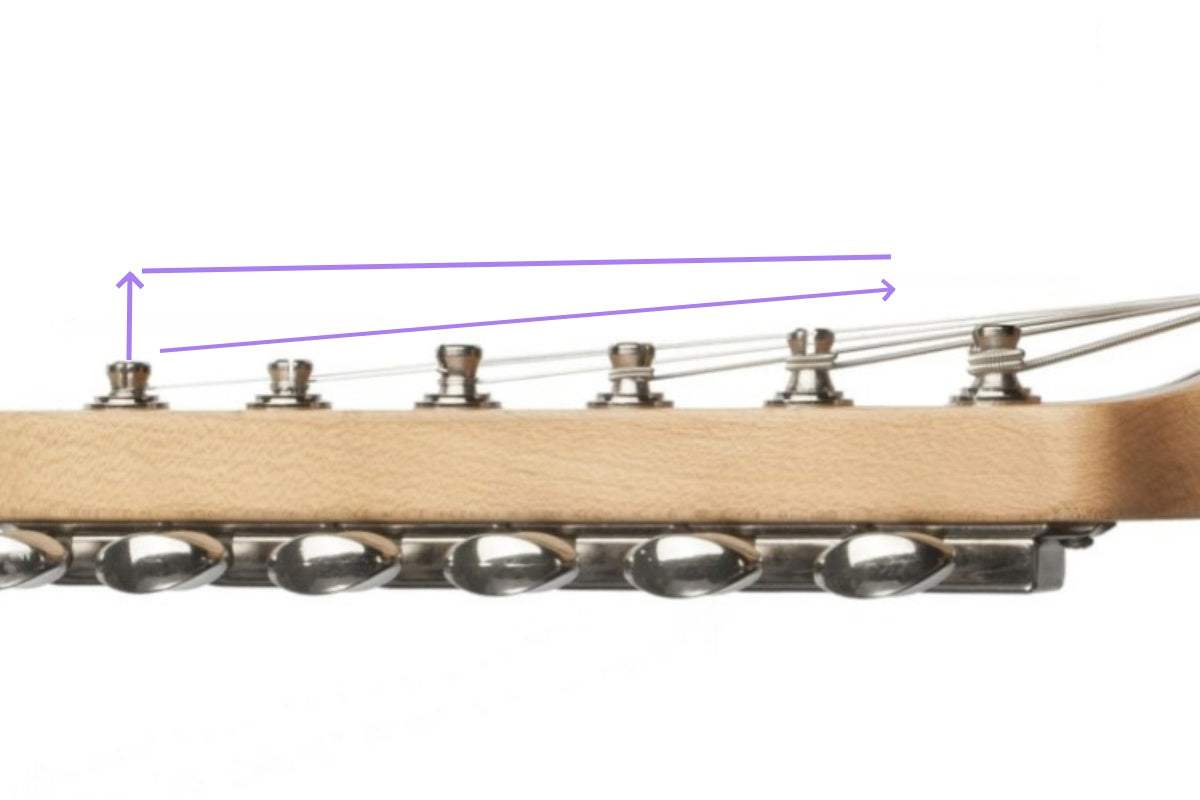Headless guitars are already a futuristic concept for many players. Most of us think that the lack of a headstock transforms a regular guitar into avant-garde gear intended for Moon-surface gigs.
Well, we’re busting that myth and bringing you all the info you need to choose the right bridge for your next decapitated ax.
Believe me, headless guitars are a one-way ticket to comfort, transportability, and great sounds.
Are you ready for the headless challenge? Here we go!
Headless Guitars Are Back!
Speaking of walking on the Moon and futuristic guitars, artists from Sting to Eddie Van Halen had their fair share of headless instruments in the ‘80s showing off on the biggest stages of the planet.
That said, the ‘90s and 2000s were not the best time for these instruments that were relegated to the back of every catalog. That’s when retro (or vintage, depending on the price tag) became the new modern.
Well, all that is ancient history now because headless guitars are back and better than ever. Yes, with more brands venturing into this growing niche, headless guitars have been improved and overhauled to meet the most demanding players’ needs.
Some examples for you to check out are:
• Yvette Young
• Tosin Abasi
• Plini
• Per Nilsson
Just like them, if you’re bold enough to join this trend, you can purchase your guitar from several brands, but you can also have a DIY approach with it and build your own model. In that scenario, there are three main types of headless guitar bridges you can choose from, tremolo, fixed, or fanned.
Let’s review each type so you can choose the best one for your upcoming headless project.
The Benefits of a Tremolo-Equipped Headless Guitar
I remember playing an Ibanez RG550 in the late 1990s and being amazed at its uncanny tunning stability. Yes, few tremolo systems can be as accurate and stable as a Floyd Rose (Lo-Pro Edge in this case).
I would take it out of the case, and it was always in tune.
Well, FR tremolos are great for stability, performance, and accuracy, but have a dark side too. If you’ve ever cut a string in the middle of your wailing solo with a floating tremolo, you’ll know that the whole thing goes out of tune and you’re completely out of the game.
Also, restringing your guitar is a time-consuming difficult endeavor.
Traditional six-spring or two-pivot tremolos like you’d find on a Stratocaster, on the other hand, don’t go out of tune completely with string breakage and don’t require cutting off the ball end of the strings either.
That said, they don’t offer the tuning stability or accuracy FR-style tremolos offer.
The benefit of a headless guitar with a floating or fixed tremolo system is that you can have the same pros of a FR tremolo system (locked or floating) without any hassles.
Yes, headless guitar tremolo systems can offer you the best of both worlds.
How so? You might be wondering. Well, because the strings don’t cover the distance that goes from the nut to the tuners, on the contrary, they’re locked there. That’s tuning stability point 1.
Furthermore, because of the design of the instrument, most headless guitar tremolos come equipped with very accurate tuners at the bridge that act very much like FR micro-tuners. That’s tuning stability point 2.
In the same vein, headless guitar tremolo bridges usually don’t need you to cut off ball ends when you restring your guitar.
Since the strings are locked on both ends, tuning stability, accuracy, and the ability to abuse your whammy bar are all perfectly possible.
Fixed Bridges for Headless Guitars
Not all players want to use the whammy bar for vibratos, divebombs, and sky-high squeals and harmonics (rest in power, Dimebag). Some of us prefer the tuning stability and sound of a bridge that’s connected to the wood of the instrument.
Yes, there’s a tone component when you talk about fixed bridges vs. tremolo units.
The first thing you notice is sustain. Furthermore, if the bridge is floating and not attached to the wood, sustain changes and the guitar also becomes less resonant.
Fixed-bridge guitars produce a specific tone that tremolo-equipped guitars can’t entirely grasp. For example, that’s why hardtail Stratocasters from the ‘70s became so popular lately. In that vein, it’s a nice exercise comparing a string-through-body design and a tremolo-equipped Stratocaster.
But that’s only half the story because the other half is feel. Yes, the guitars with tremolo units require springs. These give a little when you bend strings or hit strings with a pick too hard. Thus, if you’re very familiar with the instrument and well-versed in the art of bending, you’ll notice a difference.
Why is all this important? Well, because headless guitars usually have less mass in their body and neck. This means that there’s less wood to make the resonance and help things like sustain and percussiveness.
In that scenario, fixed bridges bring the extra sustain element your headless axe needs. So, in conclusion, I would say that, unless you love and need a tremolo unit, a fixed bridge will help your guitar’s tone and sustain, especially with a small body.
What About Fanned Headless Guitar Bridges?
Yes, headless guitars are futuristic artifacts that challenge our standards of beauty and traditional guitar shapes. But what about those headless guitars that take it one step further with a multi-scale fanned-frets design?
Well, those guitars require a special kind of bridge to accommodate the different scales per string.
The Feel Factor
Before talking about the bridge itself, let’s address why you would like to have fanned frets on your instrument to begin with. As you might know, different guitar scales feel and play differently. For example, bends in a Gibson-style 24 ¾” scale have a very different feel than those made on a Fender-style 25 1/2" scale.
What if you could measure the optimum scale length per string to achieve the ultimate comfort with a guitar that has the exact tension you need in every string? Perhaps, you like the percussiveness of Fender-style guitars on the lower strings but want to bend it like a Gibson on the higher ones. Well, you could easily achieve that with fanned-frets guitars.
Fanned Bridges for Headless Guitars
To have a specific scale length per string, you also need to have a specific bridge per string. Well, that’s exactly what these bridges look like. They offer a bridge per string where you load the string and take it all the way to the headstock to lock it up.
This approach has two main benefits:
• Easy Service & Replacement – When you have an individual bridge per string and one of those goes bad or wears out, you can easily just replace that single-string bridge and rock on. It makes performing maintenance easier than any other bridge in the market.
• Extreme Accuracy – With the ability to use a bridge per string, you can locate them at the exact scale length you want. This makes your dream headless guitar a possibility and you’ll have exactly the feel you want in every part of the fretboard.
Conclusion
The world of headless guitars is expanding as you’re reading this. New models, innovations, parts, and artists are growing this universe, and we haven’t got a clue where it can take guitar playing.
One thing is certain though, once you play a headless guitar and familiarize yourself with the feel, comfort, portability, and tone, you’ll rarely make it back.
Enjoy this awesome time of being a guitarist choosing the right bridge for your headless guitar project and have the time of your life with none of the hassles traditional guitar designs have.
Happy (headless) playing!
If you like this article, please share it!
Be sure to join our FB Group Guyker Guitar Parts VIP Group to share your ideas! You can also have connections with like-minded guitar players, Guyker updates as well as discounts information from our FB Group.





